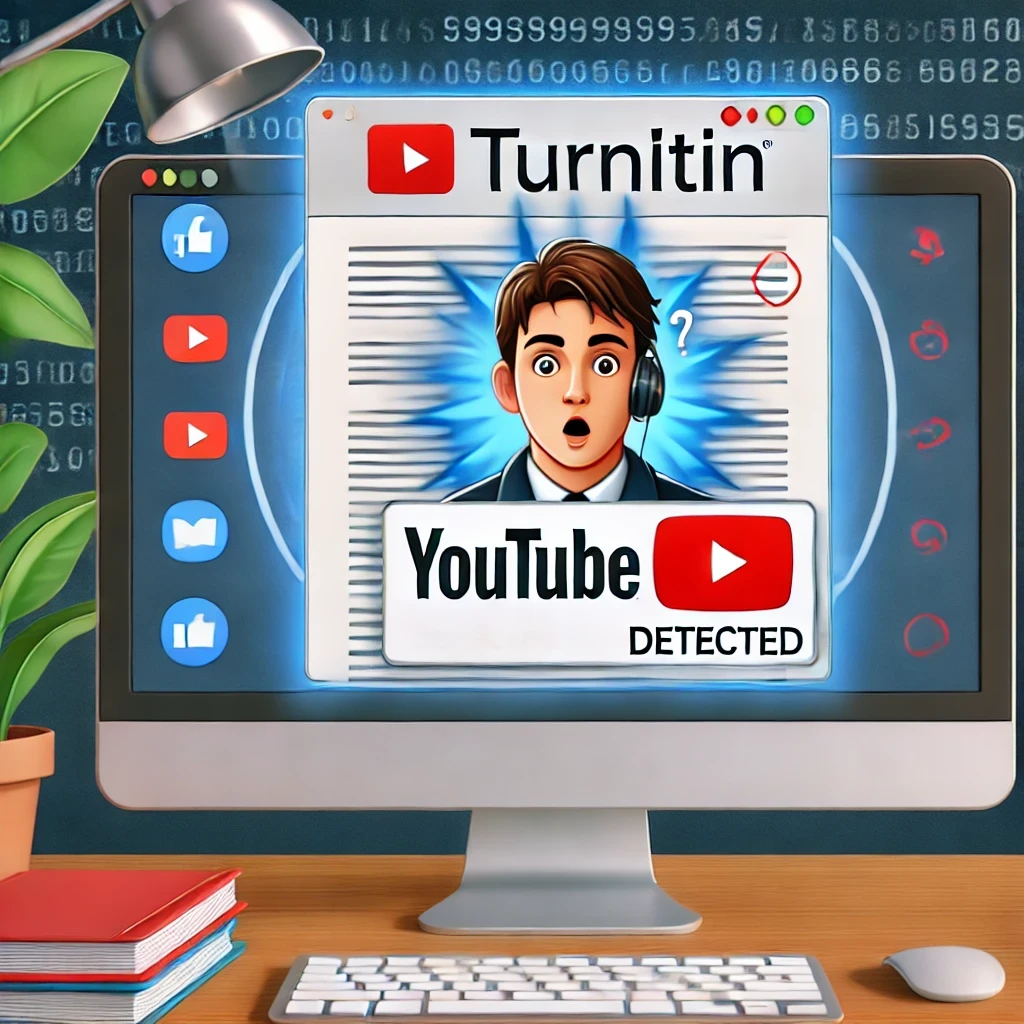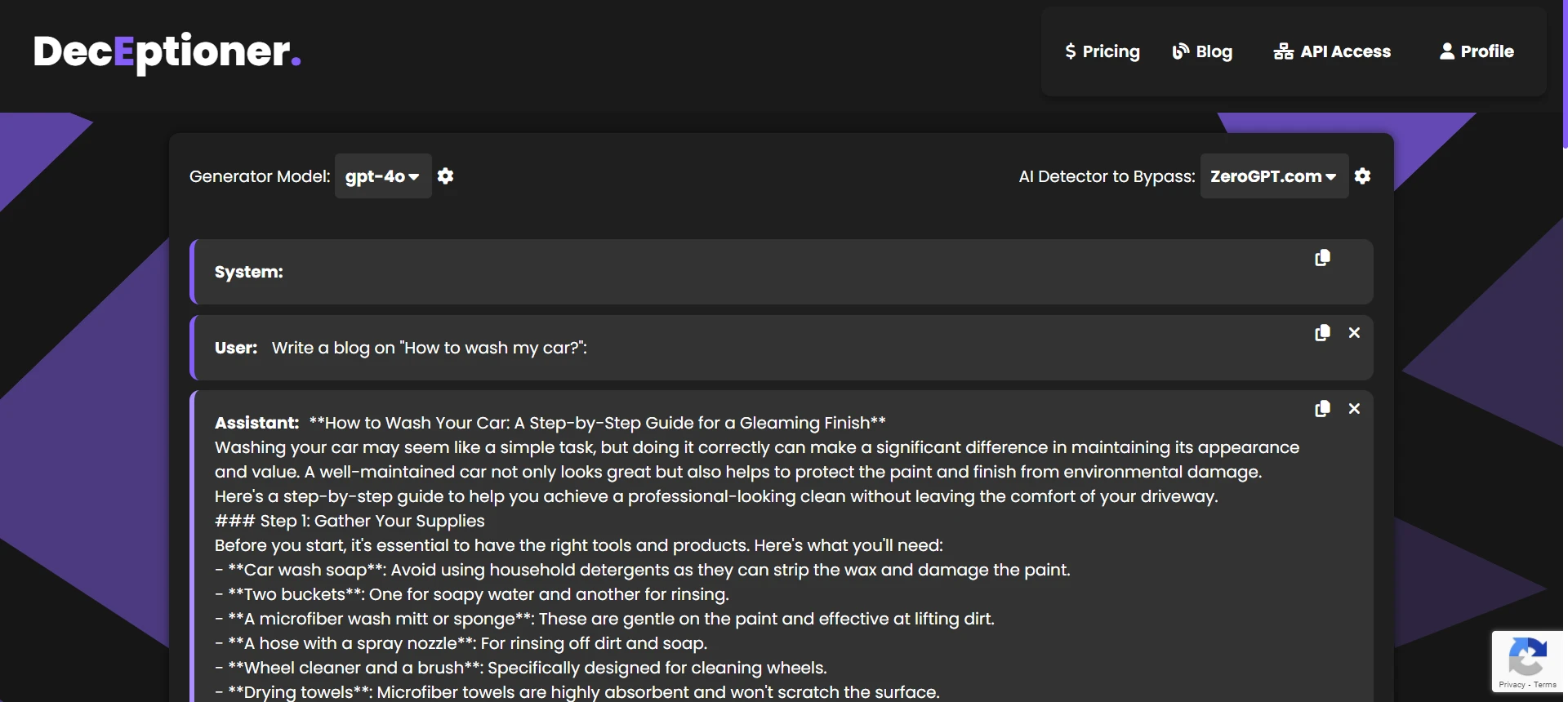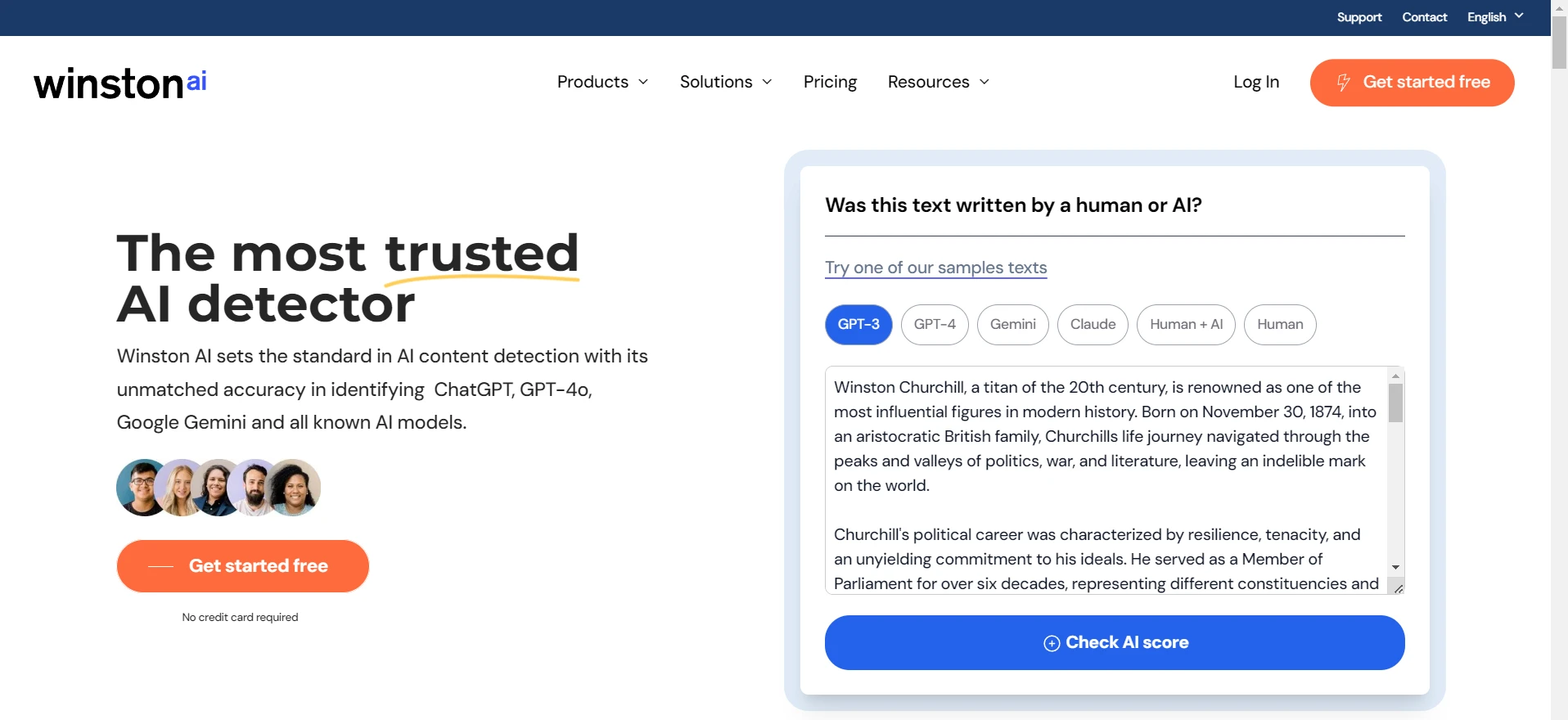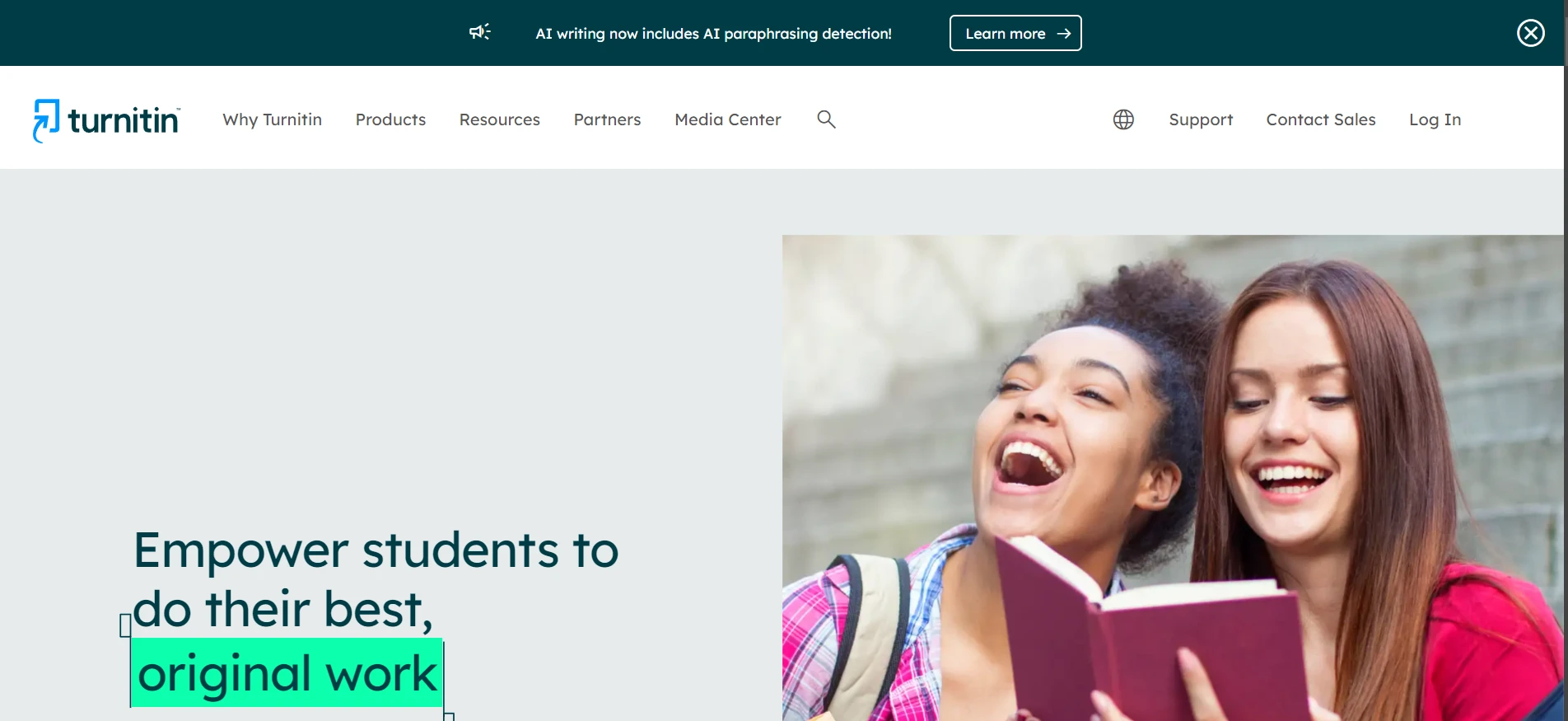As we all know it Turnitin is primarily a text-based tool for plagiarism detection. But can it detect content from YouTube? The short answer is NO if you’re dealing purely with videos or audio. The longer answer is the devil lies in the details. Keep reading to know more about it.
Why Turnitin can’t detect from YouTube?
The simple answer is just like how Turnitin can’t process audio files directly, it’s not made to scan video content. Turnitin was first introduced in 1998 and, although it has advanced significantly by integrating AI, it still relies mainly on text matching. It needs text. If you do not provide Turnitin with a textual transcript, there’s nothing for it to compare.
Hence, if it is not made to accomplish this task it won’t be able to do it. Audio, visual elements, or even auto-generated subtitles might appear on YouTube but these are not in a standard text format that Turnitin can read line by line.
What if I use transcripts?
Transcripts bridge the gap between YouTube videos and Turnitin’s text-based detection system. Appropriate transcripts that are well-structured, with punctuation and proper formatting, can be easily scanned by Turnitin. The system can show a similarity report if the text matches something already in its database.
However, many YouTube videos don’t come with accurate transcripts. Even if they do, these transcripts might be hidden in the description box or stored on a separate website. Plus, the auto-generated subtitles on YouTube are often incomplete or not human-readable, making them less likely to trigger Turnitin’s matching algorithm.
The Cost Factor of Transcription
Google Cloud offers transcription services at roughly $0.006 per 15 minutes of audio. This means that while you can get YouTube’s own (often free) auto-captions, their accuracy might not be up to the mark. For best results, you might want to use paid services like Google Cloud, OpenAI's Whisper ($0.006 per minute), ElevenLabs (free for approx. 10 minutes of audio) or a professional human transcriber to get a clean, well-formatted transcript. Only then Turnitin can do its job.
Why Turnitin can still catch text copied from YouTube?
If you or someone else has copied text from a video’s description box or from a properly done transcript, Turnitin can flag that. It doesn’t care if that text originally came from YouTube; it just compares the text to its massive database full of academic papers, books, websites, and even previously submitted student papers.
As soon as Turnitin finds matching blocks of text or suspiciously similar wording, it highlights them in its similarity report. So the moment you convert a YouTube video into text, Turnitin can read it just like any other source.
Is there a “special tool” for YouTube detection?
Not exactly. Turnitin is well-known for text-based checks. If you are worried that your text, originating from YouTube, may get flagged, you could rely on some rewriting or “text humanizer” services like Deceptioner. It will do the job.
Why it’s easy for Turnitin to pick transcripts?
Turnitin has a sophisticated algorithm that not only includes text matching but also uses AI to flag suspicious patterns. If a transcript is accurately done, the text is in a standard format. Therefore, it’s easy for Turnitin to comb through each line and compare it to what’s already in their database. Even if the wording is swapped around, if the essence or structure is the same, it can still get flagged.
Frequently Asked Questions
Q1. Does Turnitin detect direct YouTube videos or audio?
No, Turnitin doesn’t process raw audio or video content. It only detects text-based sources. If you only have a link to a YouTube video with no transcript, it’s not going to show up in Turnitin’s similarity report.
Q2. Can Turnitin flag content that has been transcribed from a YouTube video?
Yes, obviously. Once the spoken content is converted into text and stored somewhere accessible online, Turnitin can pick up on those similarities.
Q3. Are YouTube subtitles scanned by Turnitin?
Auto-generated subtitles generally don’t fall into Turnitin’s detection range. They’re often inaccurate or not stored in a text-based form that Turnitin can parse. But if high-quality subtitles are published as text, then it can be scanned.
Q4. Is it legal to use YouTube content for academic assignments?
It can be, as long as you properly cite your sources. Remember that YouTube videos are often protected by copyright law. Always credit your references to stay on the safe side of academic integrity.
Q5. Does Turnitin detect AI-based rewriting of YouTube transcripts?
Not effectively for audio or video. But if an AI rewrites the transcript into text, Turnitin can detect if that text is similar to existing sources. Also, “humanizing” tools like OneClickHuman might help reduce similarity scores but it’s not a foolproof method.
I have extensively tested Turnitin which I got from some sketchy sources. Please don't email me asking about that. I won't answer it. No, Turnitin can't detect text from YouTube videos unless it is in text format. It is not meant to do that.
The Bottom Line
Turnitin remains a powerful tool for detecting text-based plagiarism, but it won’t magically process raw YouTube videos. If your content is purely in audio-visual form, Turnitin can’t do much. The story changes the moment you provide a transcript. Whether taken from a video’s description, a professional transcription service, or the video itself, any text that matches Turnitin’s database can trigger similarity alerts.
So if you’re looking to use YouTube as a source, make sure to properly cite the transcripts or paraphrase responsibly. And keep in mind: even if Turnitin doesn’t catch it, copying someone else’s content without giving credit is still academically dishonest.


![[HOT TAKE] Why is ZeroGPT so bad?](/static/images/why-is-zerogpt-so-badpng.webp)
![[DIRECT] Best Affordable AI Humanizers (That Still Work in 2025)](/static/images/best-affordable-ai-humanizerspng.webp)
![[HOT] Can You Compare ZeroGPT With Other Top Tools?](/static/images/can-you-compare-zerogpt-with-other-top-toolspng.webp)
![[HOT] Is JustDone AI Detector Accurate?](/static/images/is-justdone-ai-detector-accuratepng.webp)





